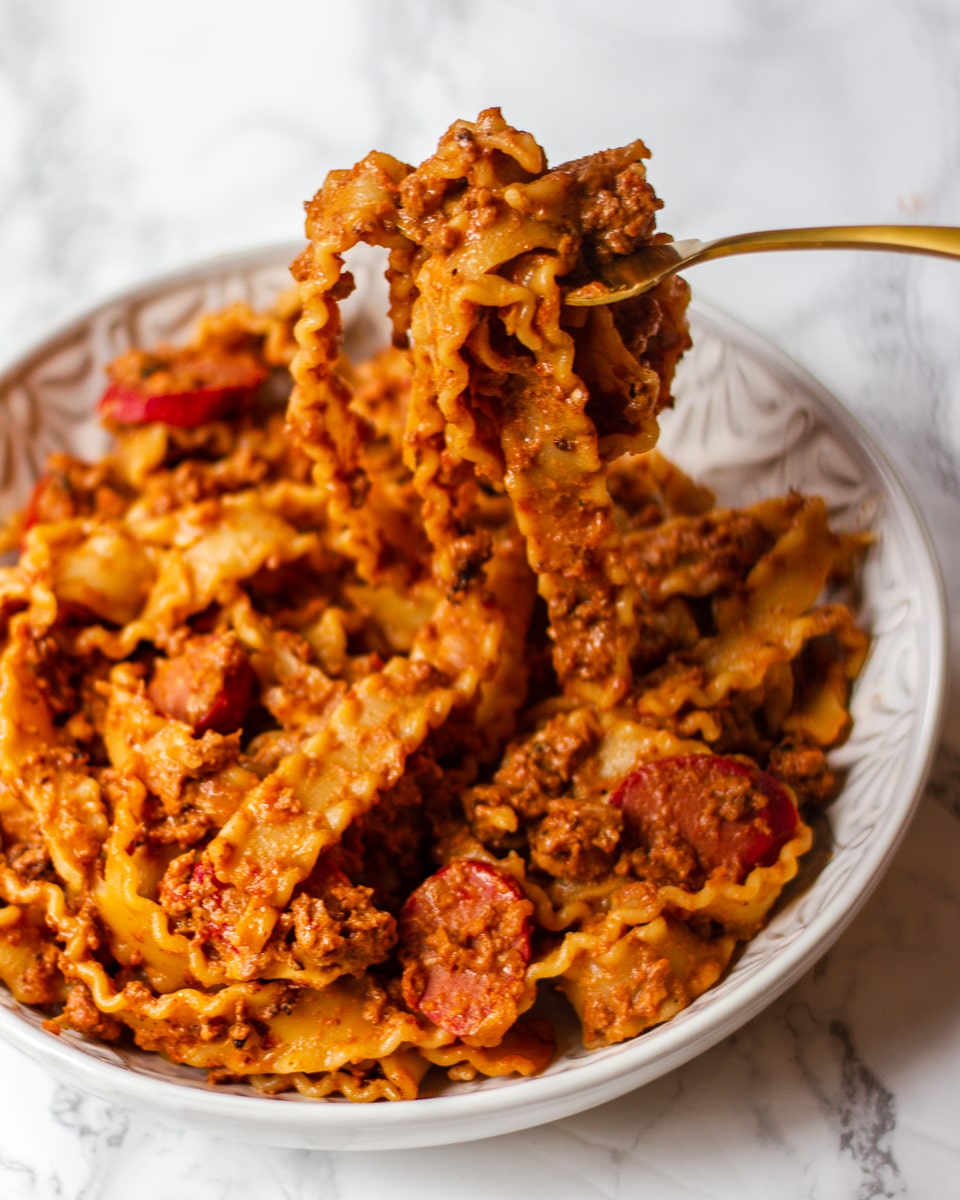
Italians, please avert your eyes, because today I’m showing you all how to make sweet, savory, lip-smacking Filipino spaghetti sauce! I grew up having it regularly, either made by my parents, served in big trays at family parties, or at many Filipino fast food chains like Jollibee (pictured below) and even McDonald’s, so it has a very special place in my heart.
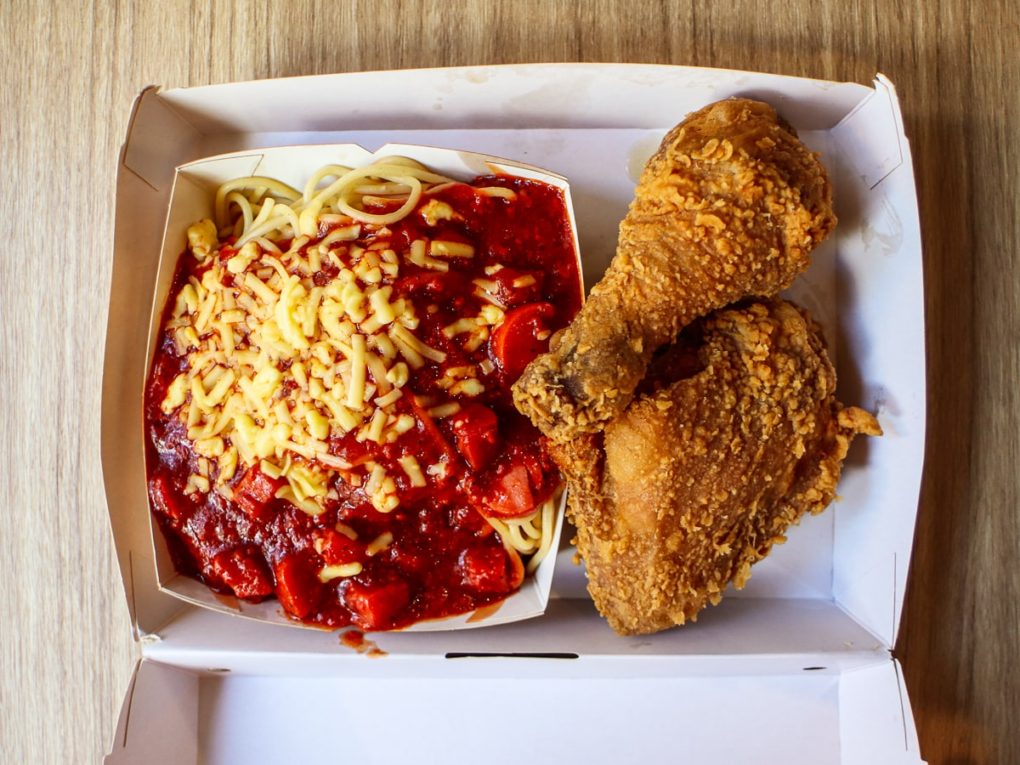
Depending on how it’s made, I think it can seem too foreign for people used to a more traditional meat sauce due to ingredients like hot dogs and banana ketchup (which I’ll explain below), but my hope is that I can get you to try my upgraded recipe that borrows techniques from traditional bolognese sauce and uses wider, higher quality pasta to create an utterly satisfying and unique dish that will win over anyone who enjoys salty-sweet flavor profiles. I recently made it for my non-Filipino friends who have never tried the original version, and they couldn’t get enough!
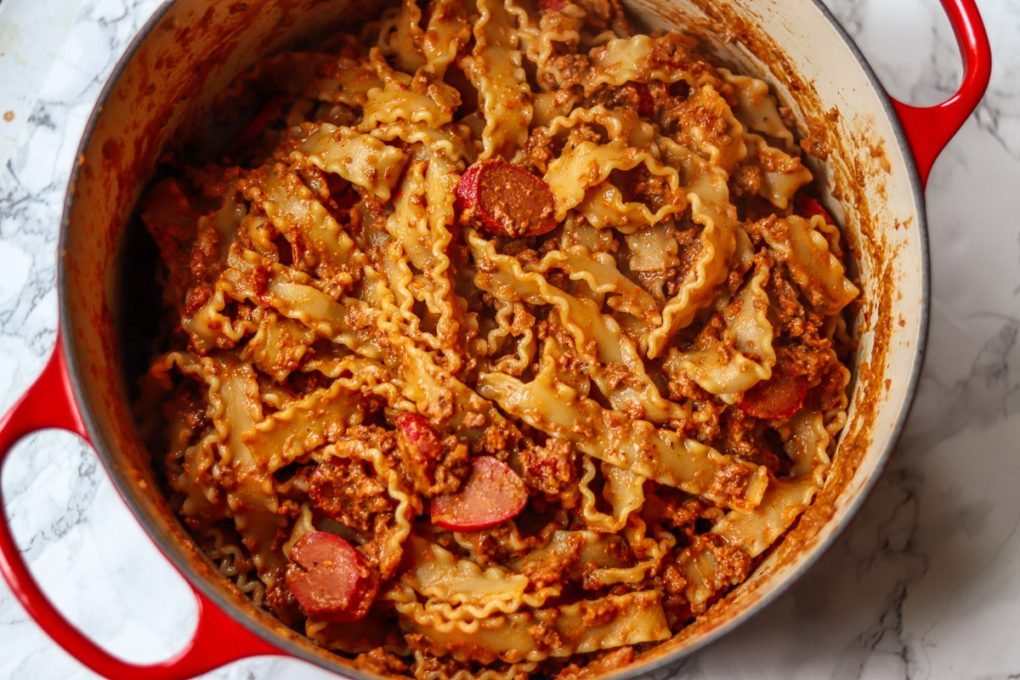
What is Filipino Spaghetti?
Filipino spaghetti starts with ingredients you’d find in a traditional Italian meat sauce:
- Ground meat – usually pork, beef, or a combination of both
- Tomato sauce or paste
- Garlic and onion – which are also key ingredients in almost all Filipino cooking

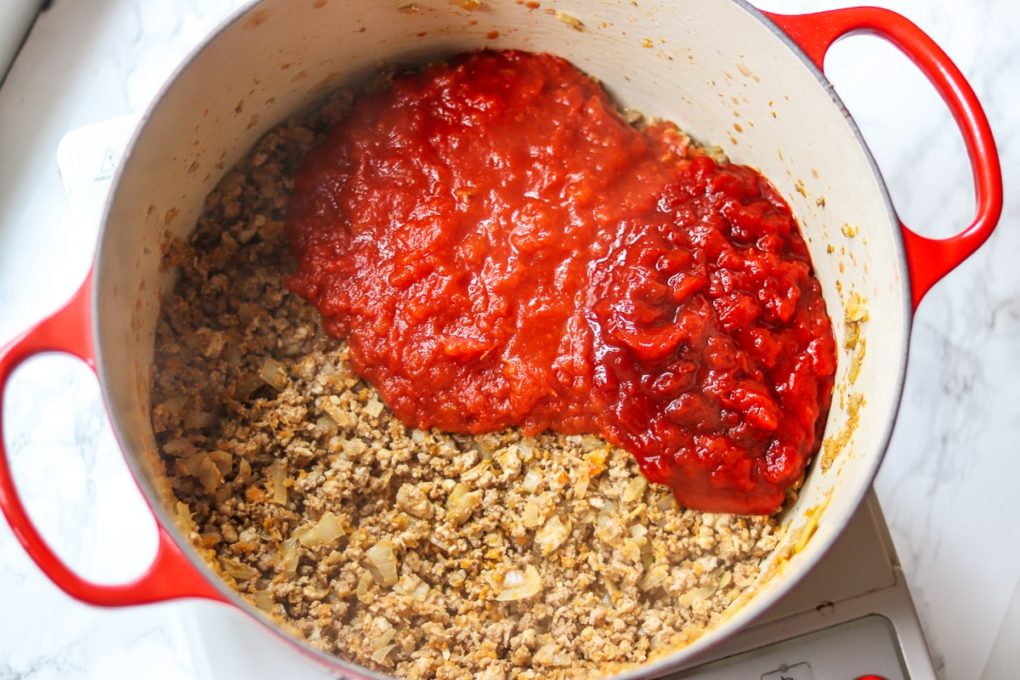
But then there are a few additions that will likely offend my Italian readers, but that’s what makes this distinctly delicious Filipino spaghetti so please keep an open mind:
- Sugar – while a traditional pasta sauce might have a bit of sugar to balance out the acidity of the tomatoes (like in my Carbone spicy rigatoni vodka sauce), Filipino spaghetti takes it up a notch by adding extra sugar so that the sauce has a distinct sweetness that sets it apart.
- Banana ketchup – a mainstay for pinoys, this bright red-dyed condiment uses vinegar and spices to turn mashed bananas into ketchup, creating a sweet yet ultra savory sauce that gives Filipino spaghetti its unique flavor. This is usually where I lose people who might have an aversion to ketchup, but the built-in acidity, sweetness and spices will really make a difference in the sauce so trust me on this one!
- Shredded cheese – usually “quick melt” cheese is used in the Philippines, a processed cheese similar to Velveeta. Feel free to use that or cheddar cheese, which will melt on top of your spaghetti to add extra indulgence
- Hot dogs – another ingredient that makes people question this dish, but IMO the bites with hot dog are the best part! More on hot dogs below
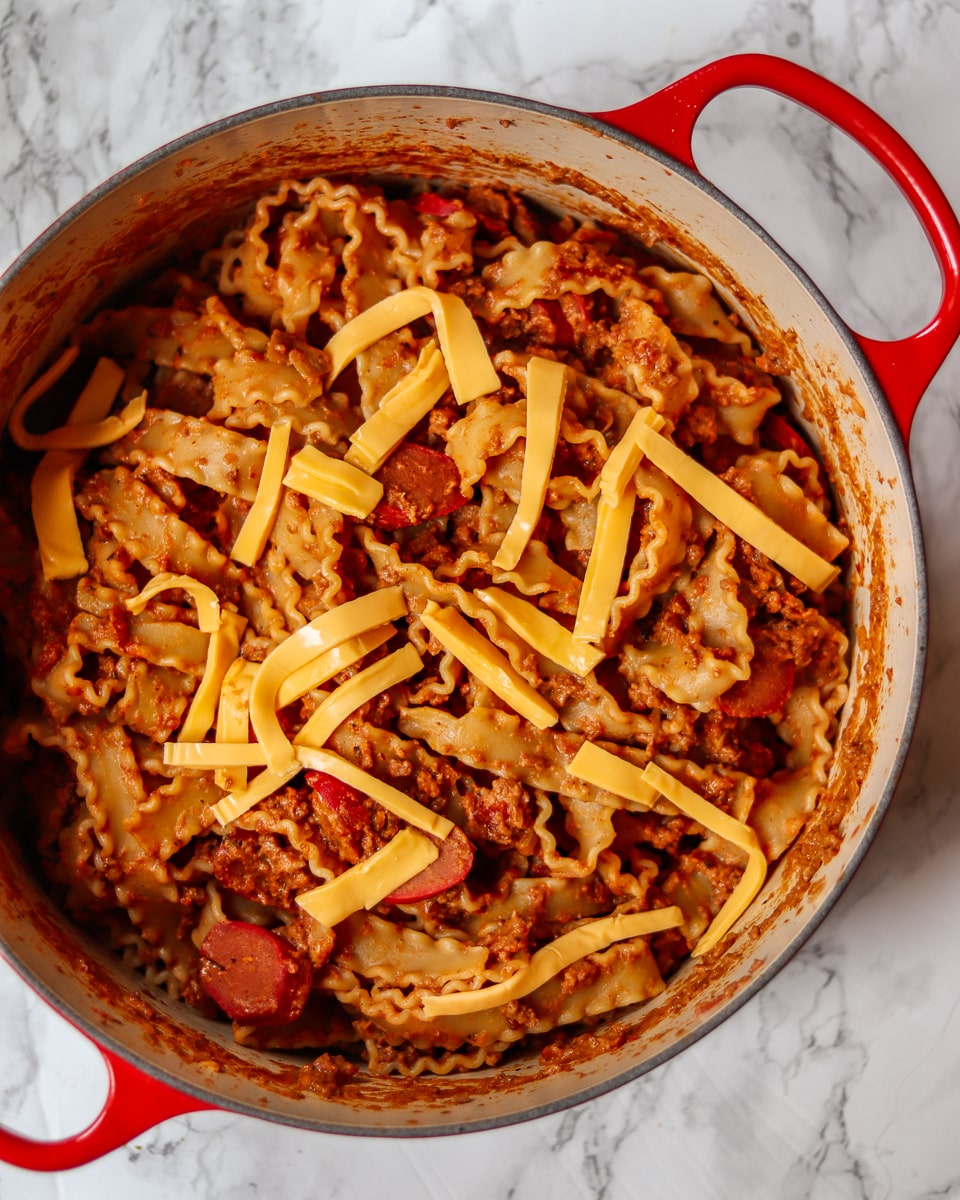
What are Filipino hot dogs and what are they doing in spaghetti sauce?
Filipino hot dogs are noticeably different than American hot dogs since they’re dyed bright red. I still don’t know why the Philippines loves coloring our food red, from hot dogs to banana ketchup to longganisa, but you’ll know they’re Filipino from a mile away! They also happened to match my Le Creuset 😂

Flavor-wise, Filipino hot dogs a bit saltier than American hot dogs with different spices used, and are made with a combination of beef, pork and poultry meat. Try searching your local Filipino or Asian supermarket for PureFoods TenderJuicy hot dogs, the most popular Filipino brand, over your typical Oscar Meyer wieners to make the most authentic-tasting Filipino spaghetti.
Since the Philippines is a generally poor nation, hot dogs were added to our version of spaghetti in order add more meat to the sauce while keeping the cost down, and hot dogs also have preservatives to help them last longer without refrigeration. They also add an extra savoriness to the sauce, similar to using sausage or pancetta in an Italian bolognese.
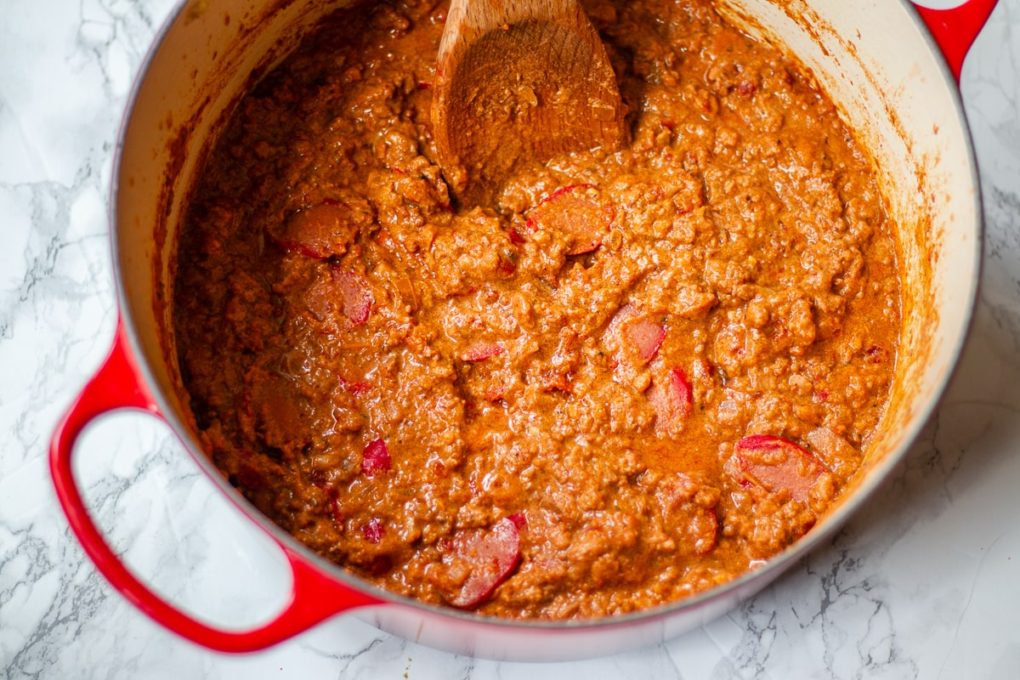
What makes your Filipino Spaghetti upgraded?
I LOVE Filipino spaghetti, but having tried so much incredible Italian food as an adult, I’ve found areas where I was able to improve it:
Simmer with crushed canned tomatoes instead of packaged Filipino spaghetti sauce
Many Filipinos (including my parents!) use ready-made spaghetti sauce that often comes in a pouch. While it’s a convenient way to make a satisfying dish, it also tastes quite processed and results in a too smooth, ketchup like sauce. I love having chunks of tomato in my pasta sauces, so I’m using whole canned tomatoes that I crush by hand to both eliminate the processed taste and add texture.
Use carrots instead of granulated sugar
Filipino spaghetti can sometimes taste too sweet, or artificially sweet where it leaves a sugary aftertaste. So instead of using granulated sugar, I’m subbing in my secret ingredient of carrots to add natural sugars while also adding complexity, depth, and body from this versatile vegetable. Plus it comes with the added bonus of secret nutrients – my friends who taste tested my sauce had no idea I used carrots in place of the sugar, so this is a great move for parents looking to sneak in some veggies for their kids.
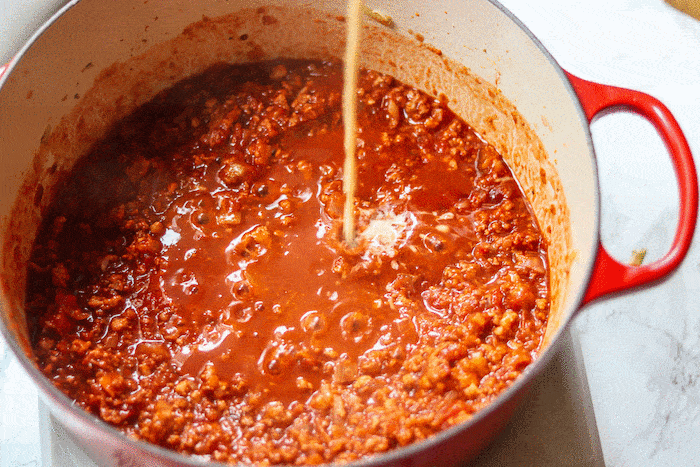
Add creaminess with evaporated milk
If you’ve ever had a well-made bolognese sauce, then you know the utter satisfaction that a creamy meat sauce can deliver. I often wish this existed in Filipino spaghetti, so we’re borrowing the technique of simmering the sauce with milk as you do for bolognese, but using the Filipino mainstay of canned evaporated milk which I always keep in my pantry. This shelf-stable milk has had 60% of the water removed, so it’s creamier than regular milk and will give your spaghetti sauce another layer of flavor and that velvety consistency to coat your pasta.
Mix the noodles into an emulsified sauce instead of keeping the sauce separate
Filipino spaghetti sauce is usually either kept separate from the noodles, like in buffet trays at a party so guests can add the sauce to their portion of spaghetti, or the sauce is ladled on top like the version you find at Jollibee, waiting for you to mix it up. The end result is still delicious, but there’s something extra satisfying about dumping an entire box worth of almost-cooked pasta noodles into your pot of sauce, adding some starchy pasta water to emulsify, and mixing it all together so the sauce melds and coats the noodles with a glossy sauce. This is what makes the pasta you get at a restaurant so much better than at home, so we’re borrowing this standard Italian pasta cooking technique here.
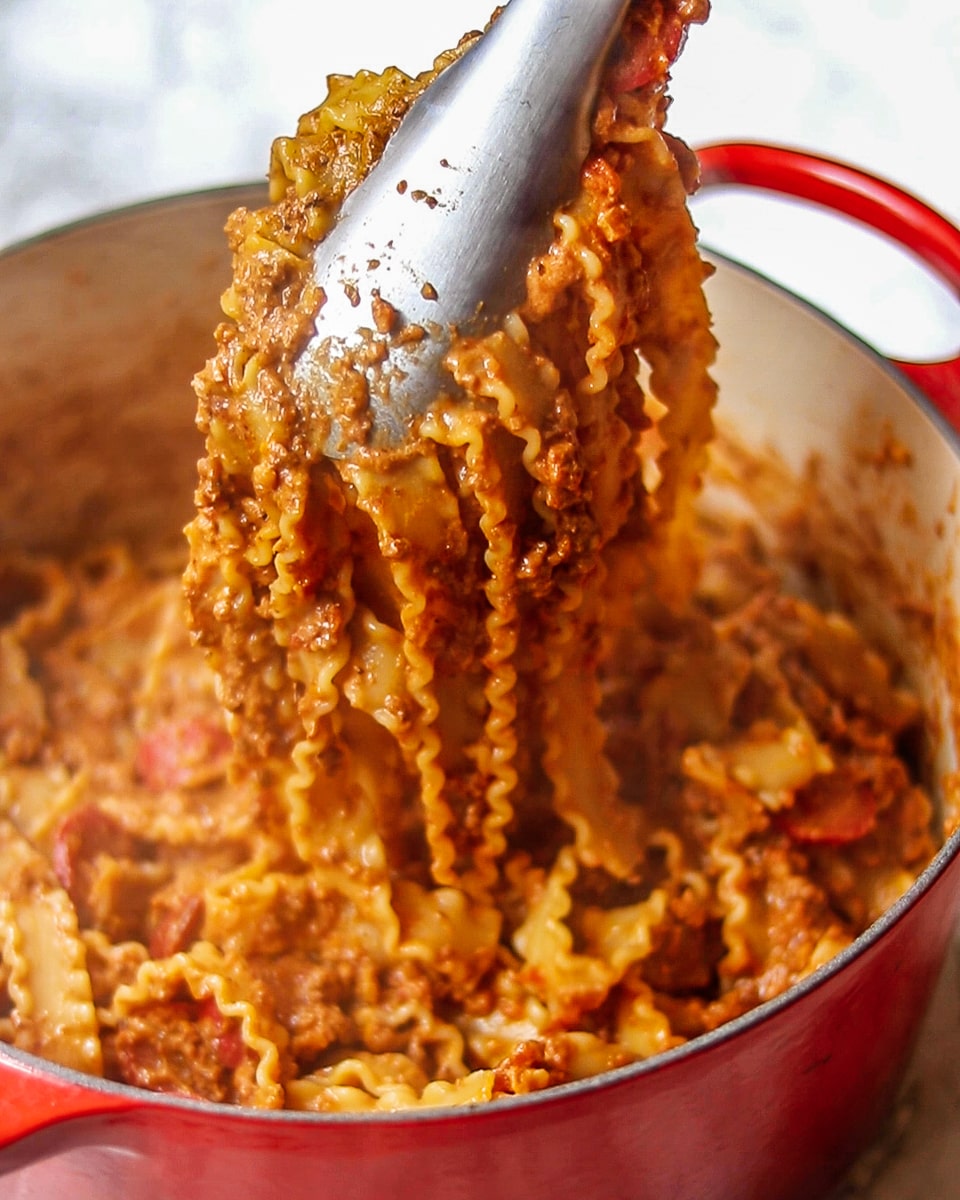
Use a thicker, wider pasta cooked to al dente instead of soft spaghetti
Now here’s where we get really crazy, because it’s not really Filipino “spaghetti“ without spaghetti! But let’s face it, there’s a world of pasta shapes that were created by Italians for the sole purpose of holding meaty sauces. I’ve always been so bummed out when I eat Filipino spaghetti and there’s all this meat or sauce that I have to scoop up separately to eat because it doesn’t stick to the thin, often overcooked noodles. You’re definitely welcome to use a thick spaghetti here, but give it a try with a wider tagliatelle, pappardelle, or even a fancier mafaldine with those curly edges to trap the ground meat so you get a gratifying bite every time.
It’s sure to please lovers of bolognese sauce and salty-sweet flavors. Whether you’ve grown up eating Filipino spaghetti or you’ve never even heard of Jollibee, I hope you’ll give my upgraded version of this classic Filipino dish a try!
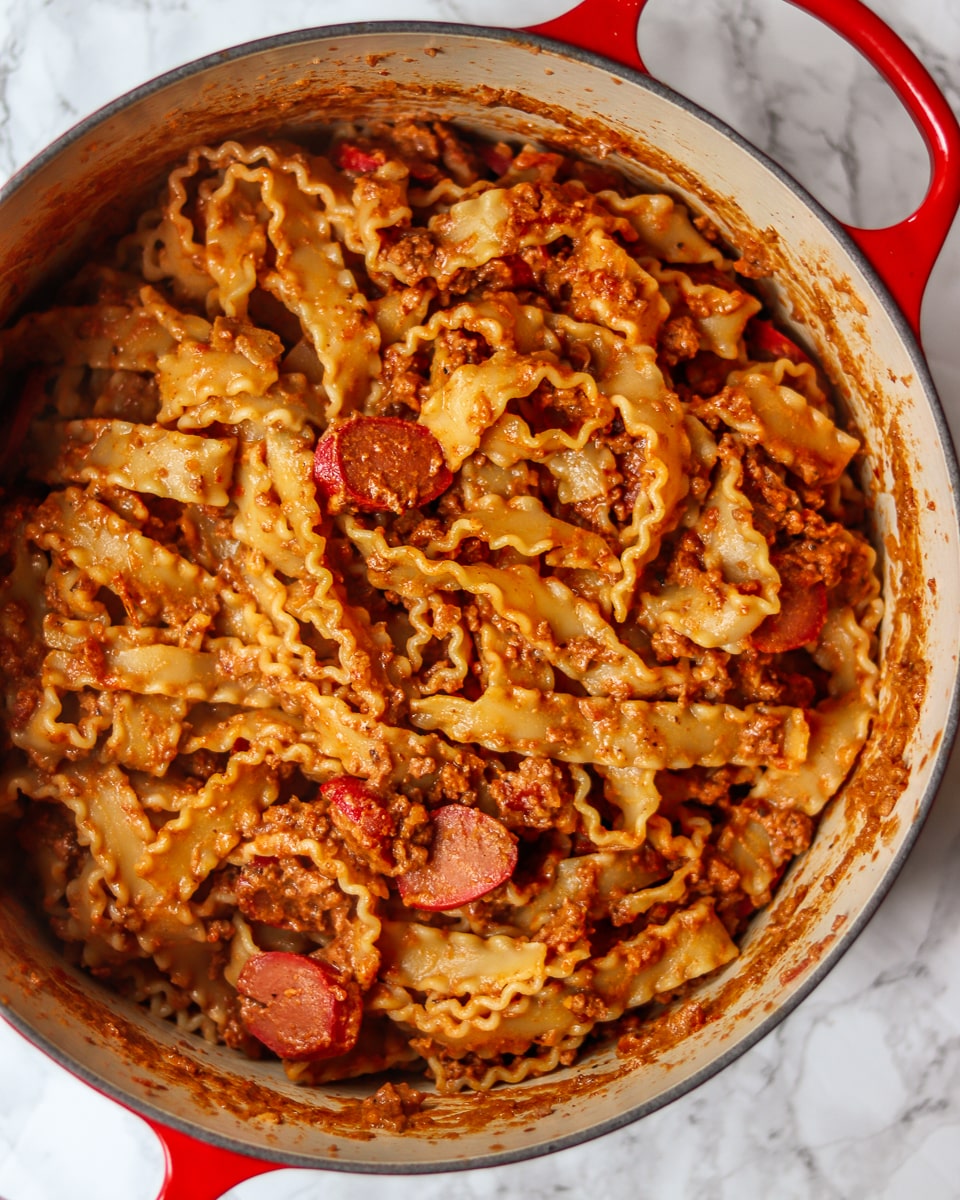
Bolognese-style Filipino Spaghetti with a SECRET Ingredient
Ingredients
- 3 tbsp. olive oil, divided
- 4 hot dogs, thinly sliced (Pure Foods or a Filipino brand preferred, optional)
- 1 onion, minced
- 2 small carrots or 1 regular carrot, puréed or finely minced
- 2 cloves garlic, minced
- 8 oz. ground beef (substitute with Impossible plant-based meat)
- 8 oz. ground pork
- 1 tsp salt, more to taste
- Few turns fresh ground pepper
- 1 tbsp. smoked paprika
- 14.5 oz. diced tomatoes, or hand-crushed whole peeled tomatoes
- 1 cup banana ketchup, more to taste
- 1 can lowfat or regular evaporated milk
- 1 lb. thick spaghetti, tagliatelle, pappardelle, or mafaldine pasta
- 1 cup beef stock (optional)
- Salt and pepper
- 1 tsp. granulated sugar (optional)
- 1/3 cup shredded cheddar, Velveeta or American cheese (optional)
Instructions
- Heat 2 tbsp oil in a nonstick pot, Dutch oven, or deep skillet over medium heat. Add the hot dogs and cook until lightly browned, stirring occasionally to infuse the oil with some hot dog flavor. Remove the hot dogs and set aside. You can choose to finely chop the hot fogs if you want them more evenly distributed in the sauce.
- Add another tbsp. oil to the hot dog infused oil, then add the minced onion and carrot and cook for 5-7 minutes so the onions and carrots have softened.
- Add the minced garlic to the pan and sauté until fragrant about 1 minute.
- Turn the heat to medium high and add the ground beef and pork, breaking it up with a wooden spoon as you stir. Cook until browned and fully cooked, about 8-10 minutes, then season with salt, pepper, and paprika.
- Add the tomatoes and banana ketchup and stir until fully combined. Stir in the evaporated milk, bring to a boil then reduce heat to low and simmer, covered, for 1 to 3 hours until meat is tender, the longer the better.
- If the liquid in your sauce reduces before your meat is tender, you can add water or beef stock for extra flavor (optional, be mindful of salt level) in 1/2 cup increments.
- In the last 10 minutes of cooking, stir in the hot dogs and season with salt, pepper, and extra sugar or banana ketchup to taste. If making the sauce ahead of time, let it come to room temperature before transferring to an air-tight container for 3-5 days or freezing for up to 3 months.
- Cook your pasta in a pot of well-salted water according to package directions until 1 minute under al dente. Once cooked, use tongs to transfer the cooked pasta noodles directly to your sauce (reheated in a pot if using leftovers) and add 1/2 cup of pasta water to the pot, stirring to combine fully. Add additional pasta water as needed to achieve desired consistency and cook the noodles in the sauce until al dente.
- Transfer to your serving platter and top with shredded cheese if using. Once it’s melted, dig in and enjoy!
Notes
If you make this recipe, I’d love to see the final product. Tag your photos on Instagram with @IndulgentEats and #SarapSundayz so I can see them!

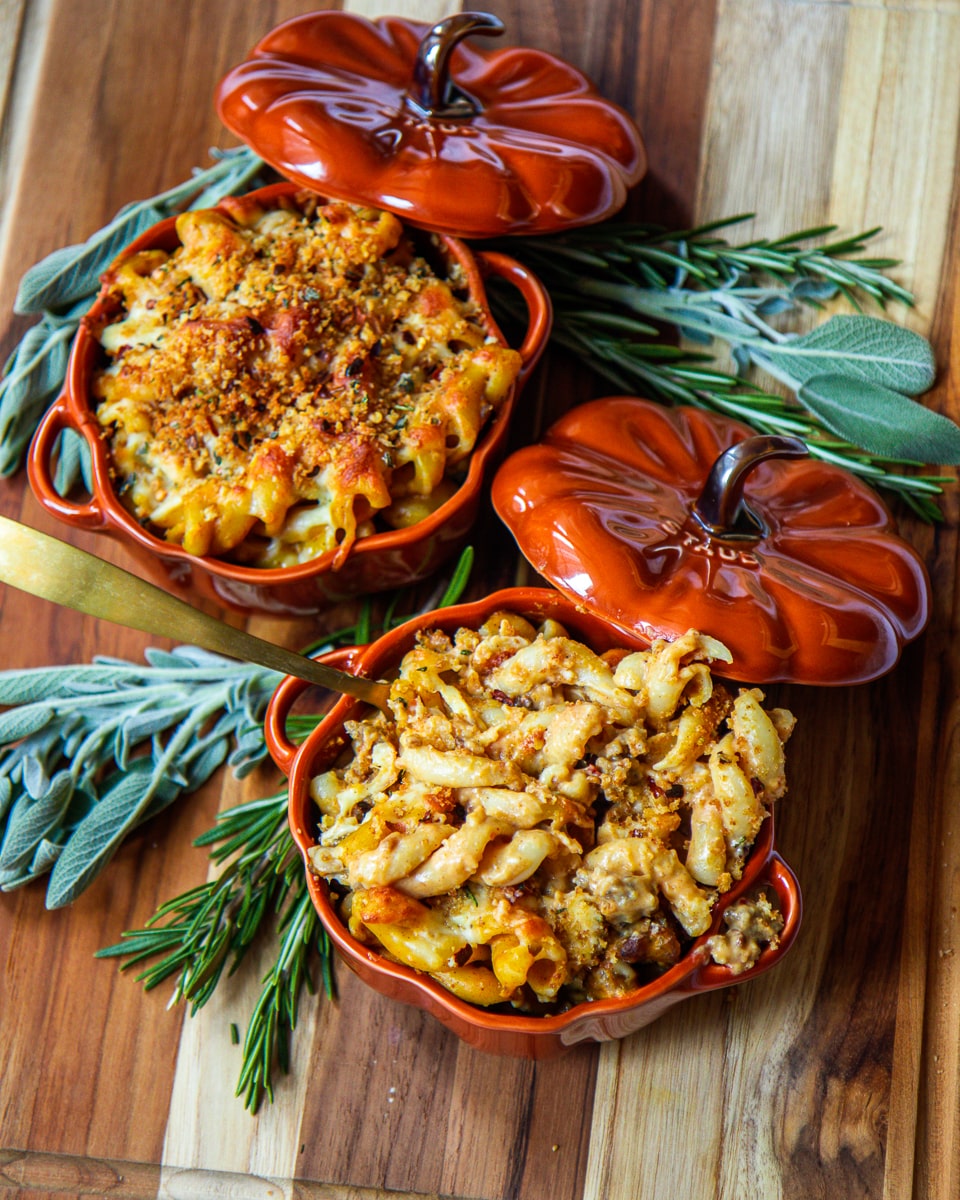
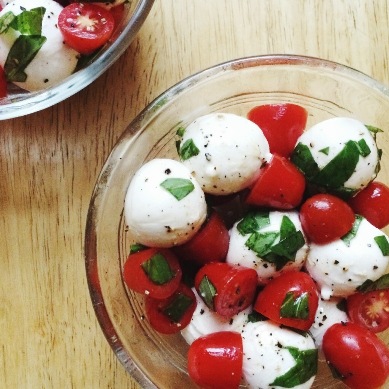

Spaghetti is one of my all time favorite dish. The combination of tomatoes along with banana ketchup yumm…. My mouth has already started watering. Thank you for sharing the recipe with us. Keep sharing more such articles with us in the future.
Thanks for the kind words – give it a try and hope you enjoy!